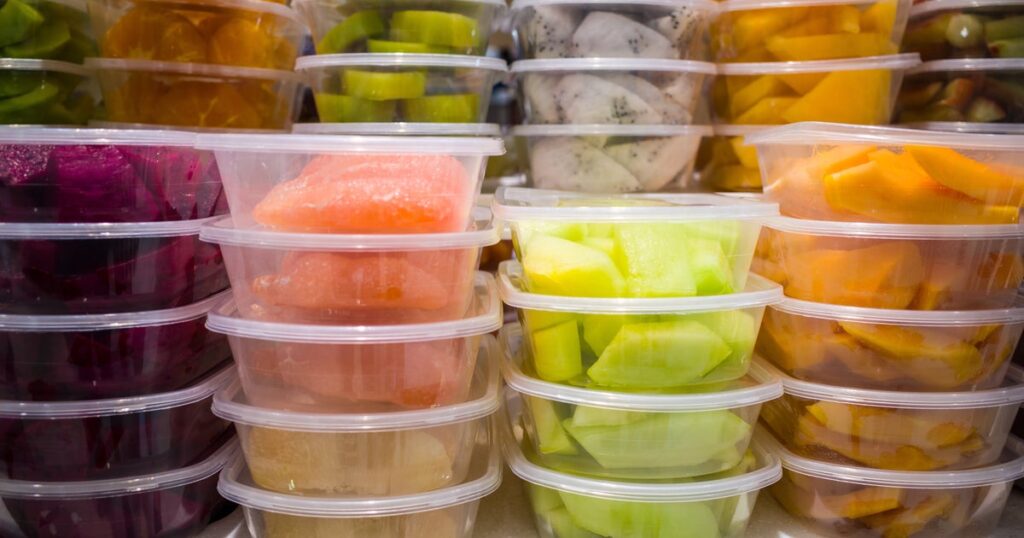Considering all the times you’ve eaten food in your life so far, you’ve probably got a pretty good track record for avoiding stuff that will make you sick. But if you’ve ever been unfortunate enough to get food poisoning, you can probably recite all the gory details, even after all these years. You might have been “lucky” to get by with just fever, vomiting, abdominal cramps or diarrhea, but each year, many people experience food-related organ failure, coma or even death.
The Centers for Disease Control and Prevention estimates that every year about 1 in 6 Americans get sick from a foodborne illness, which also hospitalizes about 128,000 and kills 3,000.
Food safety lawyers represent people who have become ill due to foodborne illnesses, and they sometimes advise food businesses about regulatory compliance. Some of their largest cases have been the Jack in the Box E. coli outbreak in 1993, in which undercooked hamburgers sickened more than 700 people and killed four children. A more recent example happened at several Chipotle locations between 2015 and 2018, when 1,100 people became sick from E. coli, salmonella and norovirus.
If your daily work is all about the harm that food has caused clients, it has to be a challenge to trust the food you eat. With a food safety system that seems increasingly under assault, we checked in with people who know how serious foodborne illnesses can be.
Lem Garcia, a personal injury attorney in California, has, in his words, “seen it all” when it comes to food-related incidents. “One client bit into a burrito and found a screw hidden inside,” he said. Another sipped on a blended drink and discovered a plastic fork that had been pureed into the mix. But the most harrowing case, Garcia said, involved a client who swallowed a wire that was concealed in a fish burrito. “It lodged in their digestive tract and required emergency surgery to remove,” he said.
Garcia doesn’t tell these stories to elicit a “gross-out” moment. “They’re real examples about real dangers that can cause serious physical and emotional harm, and they’re a reminder that food safety isn’t something to take lightly,” he said.
“My job has turned me into the most cautious diner you’ll ever meet,” Garcia said. “I’ve seen the worst-case scenarios, so I don’t eat mindlessly anymore. I take small bites, chew slowly and inspect every forkful before it goes in my mouth.” He ruefully conceded, “I’m that person at the table.”
Another member of the Careful Plate Club is Jory Lange, a food safety attorney in Houston, who said, “After over 20 years of practice, I tell people that I’m a terrible person to have lunch with. The work I do has a huge impact on the food I eat or don’t eat.”
Heather Bustos, a partner at Texas-based Bustos Law Group, a regulatory compliance firm, said she stays on top of the situation at work and at home. “In my personal life, I try to ensure everything is properly stored and labeled. I tend to avoid raw foods that are likely to have the most contamination risk, like spinach and melons. I also keep up with FDA recall notices, which are in my inbox almost daily.”
Here’s What They Won’t Eat
Food safety attorney Bill Marler put it this way: “I make a mental distinction between things that might kill you quickly and things that might kill you long term. I’ll bend toward ordering a pizza at a restaurant. The chances of a pizza killing you are pretty low.”
We gathered a list of the foods that these attorneys will never risk eating. Their top three are below, but other items mentioned include raw oysters (an increasing hazard on a warming planet), raw milk, unpasteurized juice, undercooked hamburger or other meat, raw or undercooked eggs and even hotel waffle batter dispensers. (“No way,” said personal injury lawyer Mark Hirsch. “Warm, stagnant batter is a breeding ground for foodborne illness.”)
1. Sprouts
“Just stay away from sprouts,” Marler said. “They’ve been one of the leading causes of really large-scale outbreaks around the world, and there is no foolproof way, at least yet, to determine if they’re contaminated.”
Lange also cautioned against eating sprouts: “The bacteria usually begin right from the seed,” he explained. “The scary part of this is that there is no guaranteed way to eliminate the bacteria in the growth stage or by washing. Jimmy John’s alone has so many outbreaks linked to sprouts that some stores removed them from their menus.”
The potentially dangerous varieties include alfalfa, mung bean, clover and radish sprouts, all of which can be contaminated with E. coli, listeria or salmonella through a bacterial contamination of their seeds. “I’ve seen situations where eating infected sprouts resulted in lasting kidney damage,” Hirsch said.
“There have been too many outbreaks to not pay attention to the risk of sprout contamination,” Marler concluded. “Those are products that I just don’t eat at all.”
2. Sushi buffet
“This is a hard pass for me,” Garcia said. “Raw fish sitting out for hours is a bacteria playground.”
Hirsch also skips the buffet line, saying, “I’ve seen many examples of food illness due to inadequately preserved seafood. Temperature control is essential, and restaurants don’t often have safe controls for temps.”
There are some context clues you can use to eat sushi safely. The more upscale the setting, the more likely (probably) that the raw fish you’re eating is safe. But an all-you-can-eat hoedown in which “value” is the calling card? Be careful.
As Marler put it, “I wouldn’t buy a sushi roll from the 7-Eleven, but I wouldn’t say no to a good piece of sushi at a good, sit-down sushi restaurant.”
3. Prewashed or precut produce
Since fruits and vegetables are so healthy, it’s hard to believe they could ever make you sick, but it is a serious issue. In 2023, two people died after contracting salmonella from precut cantaloupes. In that outbreak, 99 people across 32 states were infected, and 45 were hospitalized.
The biggest issue with this risk is that removing fruit’s protective skin exposes the flesh to bacteria and pathogens that can cause foodborne illness. There are other vulnerabilities, too. “The more a food is handled, the more likely it is to become contaminated along the way,” Marler said. Think of all the hands it took to bring those precut pineapple slices to your grocery store and you’ll begin to understand the danger. Fruit seems like such a safe choice, but the risks of precut options are real.
When it comes to precut fruit, Garcia said, “You have no idea how long it’s been sitting or the conditions in which it was prepared.”
“Listeria thrives in packed fruit,” Hirsch said. “I’ve represented clients who got very sick after eating it.”
It’s dangerous to buy precut foods, and it’s also dangerous to buy prewashed ones and then eat them right from the bag. Instead, consider buying the whole head of lettuce, for example, and washing it when you get home. Bustos said, “I recommend that consumers always wash their produce, since there are a lot of bad bugs out there.”
“I avoid bagged spinach or lettuce that’s prewashed as much as I can,” Marler said. “In my view, it’s safer to buy a bunch of spinach or lettuce and wash it yourself.
“Convenience is great, but sometimes I think it isn’t worth the risk of getting salmonella.”
Be Careful, But Don’t Freak Out
If you’re feeling totally freaked out, remember that these people know the worst and still manage to eat enough to keep themselves healthy and nourished. “Food is one of life’s great joys, but a little mindfulness can go a long way in keeping it safe and enjoyable,” Hirsch said. “No meal is worth a trip to the ER.”
“Staying safe with food can be tricky, especially when U.S. food standards are not as high as consumers likely think they are,” Bustos said. ”I recommend signing up for the Food and Drug Administration list of recalls, market withdrawals and safety alerts. And when you’re shopping, choose brands that have rigorous standards or high-level third-party certifications, which can be a safer choice.”
Read the full article here








